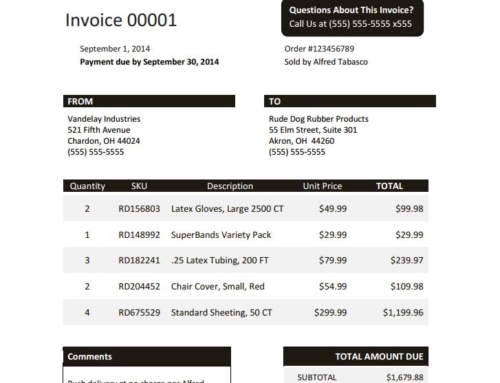Making collection calls is never easy to do. No matter how long you have been doing it, there is always someone that ends up throwing a curve ball and you simply don’t know how to respond. The best way to handle this possibility and lose your fear of collection calls is to prepare ahead of time. We’re going to cover five easy steps to help you prepare for each collection call to ensure you collect the payment you are owed on every one.
plates/”>Read the guide now!
Want something better than excel? Try Lockstep Inbox, our free AR application that will show you real time aging and other AR KPIs in minutes (yes, it’s free).
Below are tactics you can use and what to say when making a collection call.
1. Prepare
In order for a collection call to be successful, you need to have relevant supporting information readily available to ensure the call is effective, efficient, professional, and productive. You also need to have a goal for the call; your goal could be to get specific information, to get the customer to commit to taking some kind of action, etc. What to have in front of you before picking up the phone:
- The invoice(s) you are calling about plus any supporting documentation (proof of delivery, purchase order, etc.)
- Notes from prior contacts regarding this invoice (if any).
- Customer account status such as other open invoices and past payment history.
- Customer contact – who to call and their phone number.
- A smile. Even though your customer cannot see you, a smile on your face automatically makes you sound more cheerful and it’s proven to elevate your mood! A/R is just as much a customer service role as it is an accounting role, being pleasant is just another way to enhance the relationship and give them a reason to help you get this invoice settled.
2. Making the Initial Call
This is your first contact with a customer regarding a past due invoice. You will have already sent the invoice and possibly a past-due reminder by email or mail. The objective of this collection call is to determine the status of the payment and identify any issues that may be delaying that payment. In your own words introduce yourself and cover the following points:
- The invoice number in question.
- The amount due.
- The due date.
- If they say payment is in the mail, ask for the date it was mailed and the check number.
- If the payment has not yet been sent, confirm that they have the invoice, that there are no problems, and ask when the payment will be sent.
- Be sure to fully discuss any problems with the invoice and what will be done to correct the problems.
- Set a date for when to expect payment
- Always be sure to get the name and title of the person you talk with.
3. Take Notes
Record notes of the key points of the call including the time and date as well as any promises made by the customer. Without proper notes on each call, it’s likely that you will spend a majority of the phone call just trying to familiarize yourself with the customer and their account status. Not only is this a waste of time, but it leaves the customer with a feeling that you simply don’t care much about them or their payment. For help with taking notes and keeping track of them, consider using an accounts receivable automation software that has note taking built-in for each individual customer account.
4. Have Prepared Responses
Customers often have excuses for why they haven’t paid yet, or they have an issue with the invoice that they need fixed. You should be prepared to deal with these excuses and know what you are going to say. Some of the most common excuses for not paying is never having received the invoice. If you customer says this, stay on the phone with them while you send another email and confirm with them when they have received it. Another common reason that an invoice goes unpaid is because the invoice is not accurate. Make sure that you fix any issues while you are on the phone with them, instead of hanging up and trying to get a hold of them again.
5. Follow Up
As soon as you are done with your collection call, send the customer an email recapping what you just discussed, including any promises to pay. If after your first collection call you have yet to receive payment, be sure to call them again. In this call, you will want to remind them of their promise to pay and ask again why they haven’t. Remind them of the consequences of non-payment, such as reporting to credit bureaus or possible legal action.
Making successful collection calls can be tricky. You never know what kind of response you may get on the other end of the line. However, if you stay prepared and focused you will likely resolve any issues and get paid immediately. Most customer don’t like being past due on payments, so your collection call will spur them to action.
The ultimate guide to every collection letter, call scripts and email templates you need.
Read the guide now!




